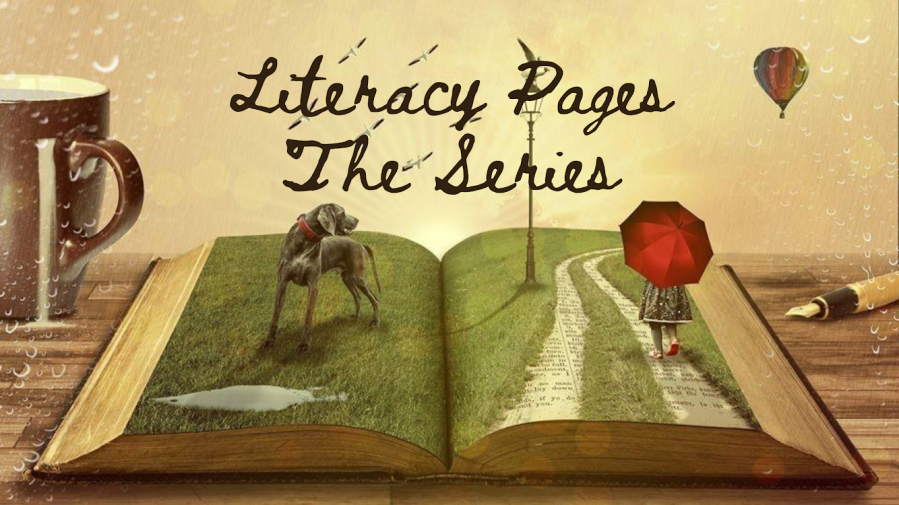Literacy Pages: The Series presents the third post in an 8-post series related to Reading Recovery and Teaching with Discontinuation in Mind from Early Lessons. Click below to check out our previous post.
Self-Extending Systems: Teaching with Discontinuation and Independence in Mind
Part 1: Actively Self-monitoring
Searching is when the reader actively looks for information to help with problem-solving, self-monitoring, cross-checking, in order to make self-corrections. It is a decision-making process and it is our job to guide students through successful reading experiences that make their decision making fast and efficient while being careful to, as Clay (2016) describes, “counteract any imbalance in the child’s use of information.”
A reader who can actively look for information will be able to problem-solve, self-monitor, cross-check, and make self-corrections. During lessons, we work toward developing the child’s ability to flexibly search for and use all types of information as they read books. The reader is looking for what is most likely to help with problem-solving when more information is needed.
- Searching Visual Information: Students need to be fast and fluent with what they know in order to make their searching more efficient. Students also need to develop effective searching behaviors, such as working from left to right when looking at a word, early on in their lessons.
- Searching Meaning: Teachers keep the meaning of the text in the forefront through conversations before and after reading to promote searches for meaning.
- Searching Structure: Rereading many different types of texts will help students build and extend language structures to make them more familiar with a variety of language patterns. Rehearsing unusual or unfamiliar language structures sets students up to build upon their knowledge of language.
Clay (2005), suggests several reasons that a student may not be searching:
- The child has a need to learn more about the information available to them as a reader.
- The child is complacent and has learned to accept wrong responses from himself.
- The child is making an effort to read faster than her capacity to process all of the information.
- The text complexity has changed considerably from what the child has come to expect.
Young students who are developing searching skills often display overt signs of searching and checking. Partially correct responses provide us with information about what the child needs to learn next. Assembling the cut-up sentence is an opportunity for our students to practice, and for us to teach for, searching behaviors as they efficiently search for the most efficient way to reassemble their message. We might see our student slowly saying the word they are looking for and searching for a a word that looks like what they hear, or reread to think about meaning and structure as they anticipate likely possibilities. It is helpful to note on the lesson record any of these types of behaviors that indicate that the child is searching for more information.
As our students’ searching behaviors become more sophisticated, we will see their scanning behaviors become more efficient and they will start to make links between new words and words they already know. We can use more general prompts such as, “What could you try?” or “Try that again and think about what would make sense and sound right, and look like that.” (Clay, 2016, p. 139)
A teacher’s response to the errors of a child who has neglected to search will either assist or restrict a child’s learning of efficient problem-solving. Clay (2005) suggests that teachers do attend to a child’s errors, but with delayed prompting until the child has reached the end of the sentence. According to Clay, immediate helping may deprive the student of post-error content and learning. When calling upon a child to search, a teacher must decide whether to direct a child to a particular source of information, or ask the child to search in a more general way.
When it comes to prompting for searching in early learning (Clay, 2016), we can use language such as:
- You said…Can we say it that way?
- You said…Does that make sense?
- Does it look right?
- What’s wrong with this? (Repeat what the child said)
- How did you know it was…?
And beyond the earliest levels, our prompting may sound like this (Clay, 2016):
- Try that again and think what would make sense.
- Try that again and think what would sound right.
- What can you see that might help?
- Do you know a word that looks like that?
- What sounds can you see in that word?
- Look carefully and think what you know that might help.
Searching is the strategic action behind strategies such as rereading, getting the word started, and taking words apart. Strategies alone will not allow the student to read independently unless the child has developed an in-the-head network of strategic processing. We must be careful to provide our students with tools (strategies) for their toolbox, but also help them develop the thinking skills (strategic processing) needed to problem-solve efficiently. We can do this from our earliest lessons to support our students’ self-extending systems that will allow for independence as readers.
References:
Clay, M.M. (2005). Becoming literate: The Construction of Inner Control. Auckland, New Zealand: Heinemann.
Clay, M. M. (2016). Literacy lessons designed for individuals (2nd ed.). Portsmouth, NH: Heinemann.

Helpful.
LikeLiked by 1 person
Pingback: Part 3: Syntactic Structures
Pingback: Part 4: Rereading to Confirm